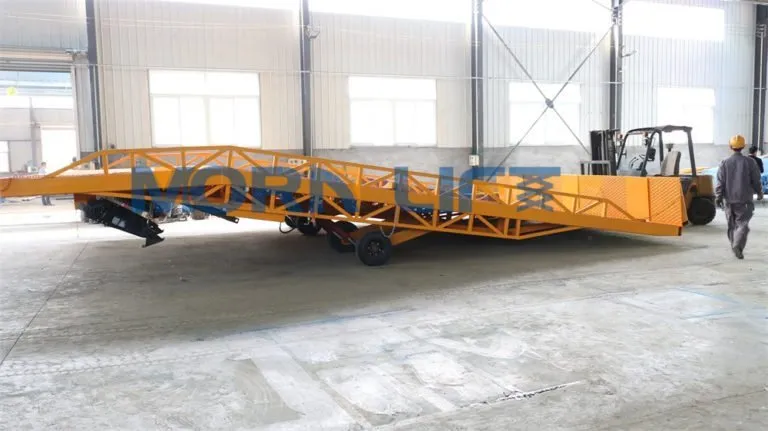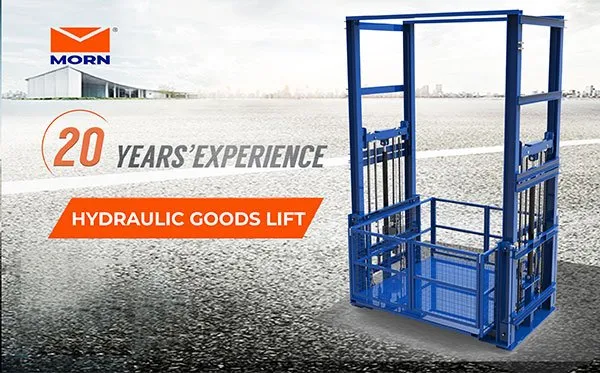Table of Contents
Height selection: How high is needed?
The height of the aerial work platform is one of the most important indicators, it determines your access points. The seller of the aerial work platform will indicate two heights in the aerial work platform parameters: platform height and working height.
- Platform height: refers to the lifting height of the platform, that is, the height of the plane on which the operator steps.
- Working height: refers to the height of the working surface that the operator’s hand can touch when standing on an aerial work platform. It is generally assumed that the average height of a human being, plus the height that can be reached by extending the arm upwards(generally calculated as 2 meters).
In addition, due to the use requirements of the boom lift, its design height will be much higher than the scissor aerial work platform. The boom aerial work platform sold by MORN LIFT can reach a maximum of 35 meters. At present, the working height that the scissor aerial work platform can reach is 16 meters.
Load options
Apart from lifting the operator, how many tools and construction materials need to be carried?
The original intention of the aerial work platform design is not to be used as a lifting device, but to safely and smoothly lift the operator to the working height. The load-bearing standards of all platforms are designed according to the concept of “supporting at least 2-3 people”. The load-bearing of commonly used scissor-type aerial work platforms and boom-type aerial work platforms are generally set according to 230kg.
Scissor-type aerial work platforms usually have a small extension platform. At present, the industry adopts the method of manual pull-out. Its carrying capacity is much smaller. It is designed according to the weight of an operator, usually at 120kg.
Within the load range of the platform, tools and auxiliary materials can be carried out. Exceeding the load range will cause protective shutdown of the equipment. In severe cases, it may cause accidents.
In addition, the guardrail of the aerial work platform is to protect the safety of personnel. Do not use it to hold materials and tools to avoid danger.
Scissor type or boom type or mast type?
The aerial work platform can be simply divided into 3 types: scissor lifts, boom lifts and mast lifts. The scissor type is suitable for vertical lifting occasions, and the boom type is suitable for occasions with certain extension requirements, that is, the working environment with a slightly larger horizontal distance between the equipment position and the working surface. According to MORN LIFT, the following factors should be considered:
Horizontal distance between equipment parking position and working surface:
At the front of the operating platform, there is a platform that can be extended slightly, so the working range can be extended to a certain extent.
If the plane you need to work is a wall, and there is a green belt under the wall with a width of one meter, which can not be rolled and loaded, then the scissor lift platform can be operated. If your work on this wall requires frequent movement, the scissor lift can only extend a short distance forward and cannot move sideways, making it a bit difficult to work.
Size of the working surface
The design of the boom lift is to solve the above problems. It can cover the working surface in a large range and at a large angle when the equipment itself is basically stationary. Painting a wall may be completed without a mobile device.
Do you need to reach over a certain height?
If there is an obstacle with a certain height in the middle of the parking position of the lift equipment and the working surface, the telescopic boom lift may be blocked by the obstacle. If you need to deal with this situation, you need to choose articulated boom lift, literally understood, is that the boom of this platform can be bent and can be adapted to a more complex working environment than the straight boom type aerial work platform.
Electric-type or diesel-type?
Without special requirements, electric drives become the first choice due to environmental protection and energy-saving.
When the size and weight of the lifting equipment are large, the problem of insufficient battery life and insufficient power will be caused by the use of the electric drive. At this time, the design of the diesel engine is adopted.
In addition, the electrically driven aerial work platform needs to be continuously charged for about 10 hours. Certain work cannot guarantee timely charging, and a fuel-driven aerial work platform can also be used.
Other conditions at the worksite
Is it a very flat cement floor?
Are you concerned about the exhaust and noise of fuel engines?
Are there narrow entrances?
Is it in a harsh working environment?
And whether auxiliary equipment such as forklift is needed to transport the aerial work platform to the designated location, etc.
For example, the trailer lift can cope with the more complex site space structure, and the body is light and narrow, suitable for indoor installation of large commercial complexes.
However, like a large shipyard, the working environment is relatively harsh and sandblasting and other operations will seriously erode the engines of high-altitude vehicles. In this case, you can consider choosing the high-altitude vehicle equipment provided by MORN LIFT, because the professional team maintains the equipment more systematically and strictly than ordinary users, ensuring that the high-altitude equipment maintains a healthy and strong heart.



